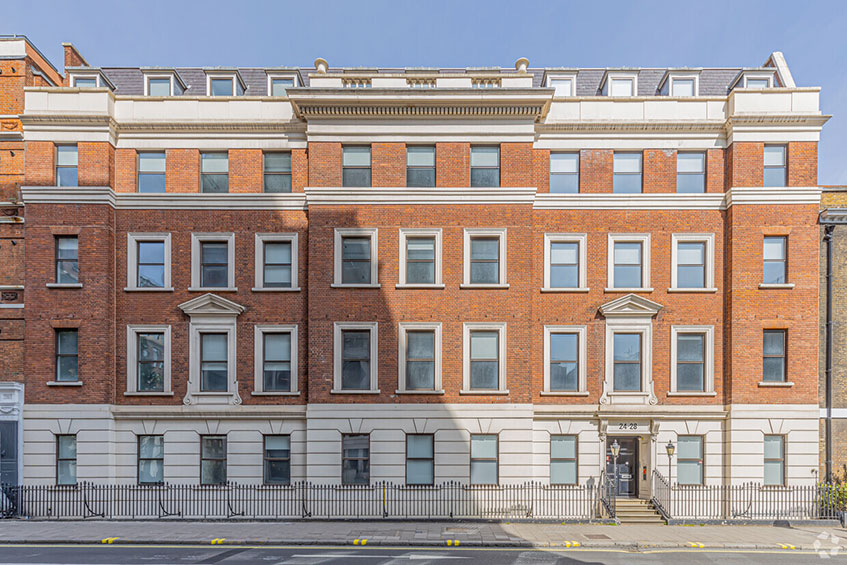With investment opportunities from fine art to wine and shares to classic cars, property is clearly not the only show in town – but it certainly looks the most consistently successful.
An analysis comparing residential and commercial property with gilts and bonds shows both property asset classes coming out on top – and that’s whether you look at the past one, three, five or 10 years. The analysis, by property group Countrywide, compares gross yields – that is, annual rental income as a proportion of the value.
The old saying that past performance does not guarantee what happens in the future is of course true, but property’s appeal is strong exactly because of this consistency.
If this convinces you to jump in, you have a wide range of choices depending on the type of property you favour, the size of your budget, and your attitude towards risk.
Much investment is direct – you own and perhaps manage an investment property yourself, or hire a managing agent to secure occupiers and handle all aspects of day-to-day operations. If you choose direct investment, you have commercial and residential options.
The performance of commercial property – including shops, warehouses, offices, and even unusual premises such as car parks – has seen long-term volatility: values fell sharply in 2008 in response to the banking crisis but more recently properties in prime sites with a record of letting well to occupiers have seen capital increases of 10% per year.
As with other assets, commercial properties in best condition and popular locations are most expensive to buy; as a result they offer lower rental yields but carry less risk of falling vacant.
Secondary location property will be cheaper to buy and will provide higher yields – but with more risk of lying empty or being considered outdated for modern requirements.
Most investors use commercial mortgages, but interest-only loans common for residential buy to let are rare in this sector.
“It’s an illiquid market so lenders want to see the capital paid down over the period of the loan,” says David Whittaker of Mortgages for Business.
Residential property is higher profile with a significant proportion of investors not only owning but also managing the property.
The residential lettings market is already large (19% of households privately rent with London near 40%). The good news for long-term investors is that predictions are for this sector to grow significantly as housebuilding falls short of population growth.
Recent tax and regulation changes have made management of the sector tougher: the National Landlords’ Association says there are 200 pieces of legislation impacting on private landlords with frequent health and safety and data protection updates in particular. Therefore many investors instruct a letting agent to undertake day-to-day management.
A 3% stamp duty surcharge on buy-to-let properties plus mortgage interest tax relief cuts for landlords have hit the headlines recently, but the sector remains attractive.
Investors typically secure interest-free mortgages: many lenders require evidence that the property being bought will attract a rent of 135-145% of monthly loan payments.
The key is to buy where prices are low so yields are high and where a good local economy and improving infrastructure and transport will bolster demand.
Auction house Allsop says the East Midlands and Yorkshire are the best performing regions: each has a return of 11.25% annually over a five-year period for a 20% tax payer, and 9% for a 40% tax payer.
London – where house prices are high, pushing down yields – still gives a respectable 5.75% annually for 20% tax payers and 4.75% for a 40% tax payer.
“With no quick solutions to the housing crisis, long-term private landlords providing decent accommodation will continue to play an important role. As long as there are no new tax rises targeting landlords, buy to let will remain a stable and attractive sector for long-term investors,” says Allsop partner Paul Winstanley.
If buying a property looks too risky or involves an unaffordable deposit (typically 15% for a commercial property and 25% for a buy to let) there are indirect routes through crowdfunding or property funds, which allow much smaller investments.
In many cases these can be as little as £100 to hundreds of thousands of pounds.
“Real estate has historically been one of the best asset classes but the higher grades of investment were previously only on offer to institutions or high net worth investors,” says Uma Rajah, chief executive of CapitalRise. His firm now allows crowdfunding investors to stake as little as £1,000 in multi-million pound prime London developments.
If you prefer long-standing property funds rather than crowdfunding, you have two options.
Firstly, some funds buy properties on behalf of investors – hence their nickname of ‘bricks-and-mortar funds’. Investors’ risk is spread across a portfolio of units which may be as diverse as London offices, suburban shopping centres and north of England factories.
This means a market fall in one sector should not badly damage your overall investment. All aspects of management are handled by the fund and investors get a share of the capital appreciation (or a share of losses, of course) plus a regular share of rental income.
A second type of fund instead invests in firms that are involved in diverse property activity; usually these companies are quoted on the London Stock Exchange and may range from housebuilders to insurance firms underwriting purpose-built rental property.
Most funds of this latter kind are tax-efficient structures called real estate investment trusts. Returns, as with traditional stock market investments, come through share price appreciation and dividends.
Property investment has arguably never been easier nor as accessible, even for small scale investors. Normal health warnings apply as markets, including property ones, go down as well as up. Yet the long-term trend is healthy and, for many, highly attractive.
Crowdfunding
Crowdfunding allows entrepreneurs to raise capital from numerous individuals contributing relatively small sums, and allows investors to get involved in sectors where the entry costs of a traditional investment would be too high or too risky for comfort.
Specialist crowdfunding operators include PropertyPartner, The House Crowd, Crowd2Let, and Property Moose.
All property crowdfunding operators allow small-scale investments (perhaps only £10), usually with a business model based on buying low-cost flats to let on a long-term basis, or to buy a commercial unit to improve and sell in the short-term.
Returns to the investor mirror the share of the project their investment funds minus fees, which typically include a management charge (around 15% of income, in line with traditional letting agencies) plus a sales fee (perhaps 5% of the capital uplift).
“Despite having to fight reams of red tape to make it happen, property crowdfunding is already worth £700m a year in the UK” says The House Crowd founder Frazer Fearnhead.
The Financial Conduct Authority advises crowdfunding investors to conduct due diligence – checking the business or person looking for funding – and to make sure they are happy with the risk level of the investment and the costs associated with it.
Real estate investment trusts
A REIT is an investment company owning and managing residential, commercial or mixed units on behalf of shareholders – you invest by purchasing shares in the company.
REIT rules are complex but there are two main elements – part of the firm will handle letting, which is exempt from corporation tax, and another part will handle property management, which is subject to corporation tax.
Profits are distributed to shareholders, with payments from the tax-exempt element treated as UK property income for the investor and paid net of basic rate tax.
Payments from the non-exempt part of the trust are paid with a tax credit.
Because part of a REIT avoids corporation tax, there is more profit for distribution, but a downside of REITs is that they are not subject to direct supervision by the Financial Conduct Authority, and this reduces redress rights for investors if an operator hits trouble.
Purchasing a buy to let
In addition to the property cost, budget for:
- Legal conveyancing (leasehold property): 0.4% of purchase price
- Survey & valuation (Homebuyers Report): £750+VAT (minimum)
- Stamp Duty Land Tax (SDLT) < £125,000: 0% to 3% for additional properties
- SDLT £125,001 to £250,000: 2% to 5% for additional properties
- SDLT £250,001 to £925,000: 5% to 8% for additional properties
- SDLT £925,001 to £1,500,000: 10% to 13% for additional properties
- SDLT £1,500,001 +: 12% to 15% for additional properties
- Land Registry fee: 0.1% (approximately)
- Local council search: £200 (approximately)
You may also require fees for arranging the mortgage (highly variable) and a lettings agent to find tenants and manage, costing some 15%+VAT of your regular rental income.
Buying a commercial property
In addition to the property cost, budget for:
- Surveyor: 0.5% to 3% of purchase price
- Conveyancing fee: 1.5% to 1.25%
- Stamp Duty Land Tax (SDLT) <£150,000: 0%
- SDLT £150,001 to £250,000: 2%
- SDLT above £250,000: 5%
- VAT applicable on some buildings
You may also require fees for arranging the mortgage (highly variable) and a lettings agent to find tenants and manage, costing 12% to 17%+VAT of your regular rental income.









